Intel Core i7-6700K Review: Inching Toward Extreme
CPU Benchmarks
The AIDA64 suite has various benchmarks for CPU, FPU and memory testing: CPU Queen is an integer benchmark that tests branch prediction and misprediction penalties. CPU PhotoWorxx tests the SIMD integer arithmetic execution units of the CPU and the memory subsystem. CPU ZLib is a compression benchmark that tests the combined CPU and memory performance. CPU AES is a multi-core encryption benchmark that uses Advanced Encryption Standard data encryption. CPU Hash is an integer benchmark that measures performance using SHA1 hashing algorithm.
FPUJulia measures single precision FP, FPU Mandel measures double precision FP, FPUSinJulia measures extended precision FP while FPUVP8 is a video compression test utilizing the FPUJulia fractal module. Despite the lower clock speed at stock, the i7-5775C pulls ahead in CPU hash and Photoworx and matches the CPU Z-lib performance of a stock i7-4770K.
MAXON’s Cinebench R15 runs two sets of benchmarks, a processor test for the CPU and an OpenGL test for the graphics cards. The 3D rendering workload is based on Maxon’s Cinema 4D, a program utilized by movie production studios world wide for special effects so it is a semi-synthetic test closer to real-world 3D graphics benchmarking. Not surprisingly, with the i7-5775C’s stronger Iris Pro graphics, it pulls ahead of both the i7-6700K and i7-4770K in OpenGL although the i7-6700K admirably stays much closer behind at only a 6-point lag compared to the 20+ deficit between the i7-4770K and the i7-5775C. Single core performance and multi-core performance is considerably higher with the i7-6700K, which will be interesting to see in the parity benchmark if it holds true.
Cache and Memory Benchmarks
Aside from CPU and FPU benchmarks, AIDA64 also has a cache and memory benchmark built-in. Due to differences in architecture of course, the i7-5775C is the only one with an “L4” cache which refers to its pool of eDRAM that is not available in the the i7-4770K or in the i7-6700K.
Multimedia, Compression and Semi-Synthetic Benchmarks
x264 is a popular free software library for encoding video streams into the H.264/MPEG-4 AVC format. x264 FHD measures how efficient a system is in encoding H.264 video and produces results in frames-per-second. H.265/HEVC video encoding is the future of video able to compress significantly larger resolution videos including 4K and make streaming feasible. The downside is that hardware support is still few and far between so processing requirement is steeper than current H.264/AVC standards. x.265 is an open-source implementation of the H.265 standard and x.265 HD benchmark tests the CPU’s ability to process an HEVC video. This is purely processing power benchmark (IGP is not involved) and the i7-6700K takes the lead by quite a bit, helped by the higher frequencies but it will be interesting to see how it performs later when the processors are set at the same clock speeds.
Handbrake is free open-source video transcoder that can convert various video file formats to compatible video files for other typical media viewing applications such as in an iPhone or Android tablet. Blender Foundation’s open movie Sintel video, a 1GB 1080p H.264 5.1 surround audio MKV file was used converted to the built-in iPod Preset (5G Support), then manually timed. The results are in seconds and the lower number is the better result. The i7-6700K pulls ahead quite a bit here while not surprisingly, the i7-5775C trailed behind having the slowest default clock speed.
WinRAR is a very popular compression program and has a built-in multi-threaded benchmark. The new Broadwell i7-5775C clearly pulls ahead here in compression, making use of that large pool of fast eDRAM since compression benchmarks are memory sensitive despite the difference in CPU clocks.
Other than the OpenGL test in the Cinebench R15 benchmark, PCMark 8 is the only program in our CPU test suite that includes the GPU for benchmarking since it is a semi-synthetic measuring program that simulates typical home, work or creative authoring related workloads including web browsing, gaming, photo editing, video chat and productivity. Like Futuremark’s 3DMark, a numerical score is generated from the combination of semi-synthetic tests. The score reflects the performance of the entire system (including GPU and SSD performance) and how well it performs the tasks relative to other PCs. Not surprisingly, the creativity score shot through with the i7-5775C compared to both Skylake and Haswell due to strong graphics performance utilized in the video editing part of the benchmark. The Intel i7-6700K nonetheless takes the overall lead, advancing the most in work and home related benchmarks which focused on more productivity and casual graphics processor workloads.
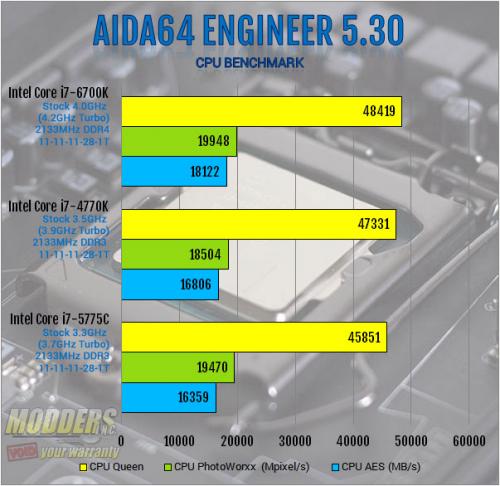
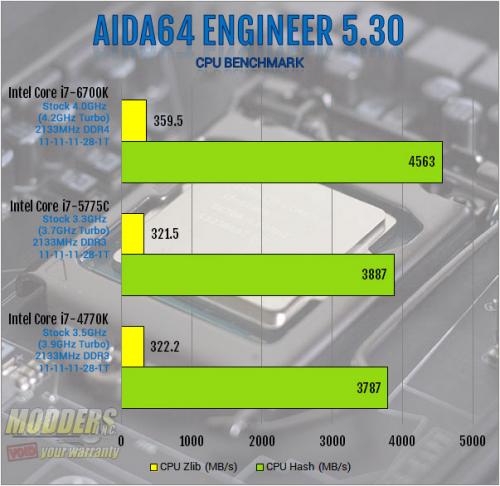
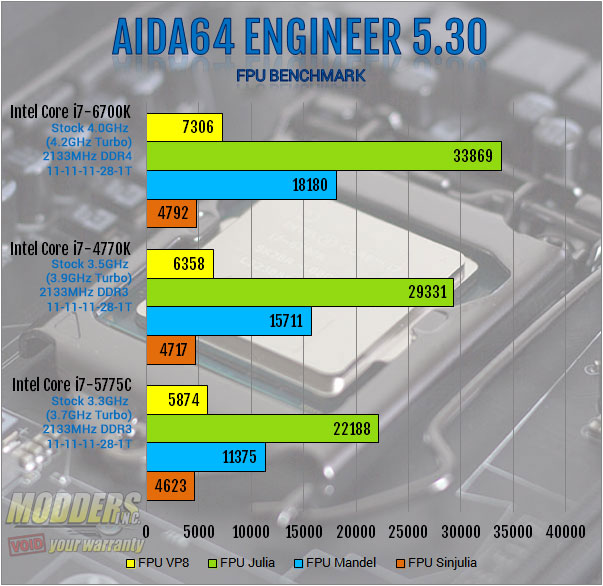
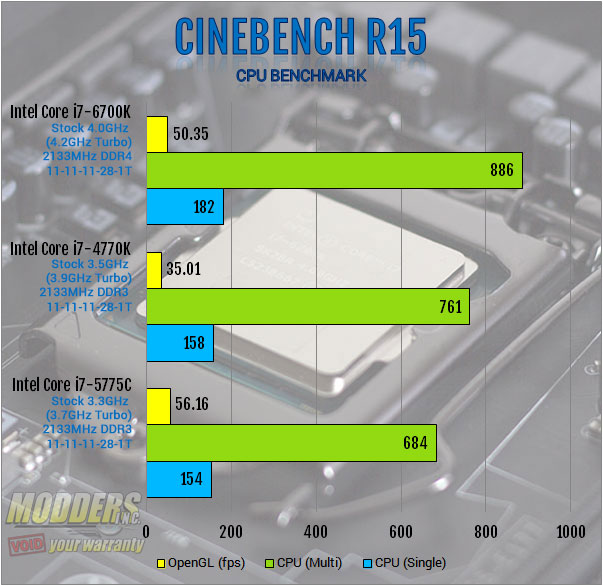
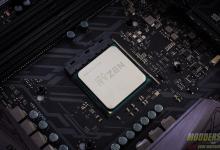
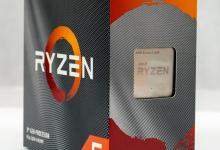
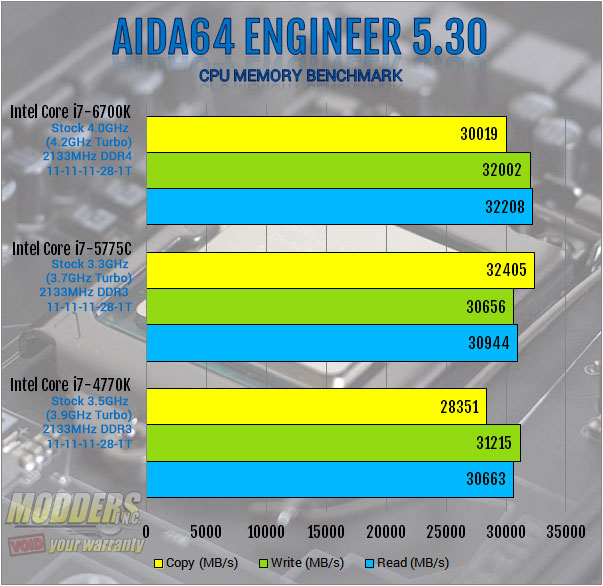
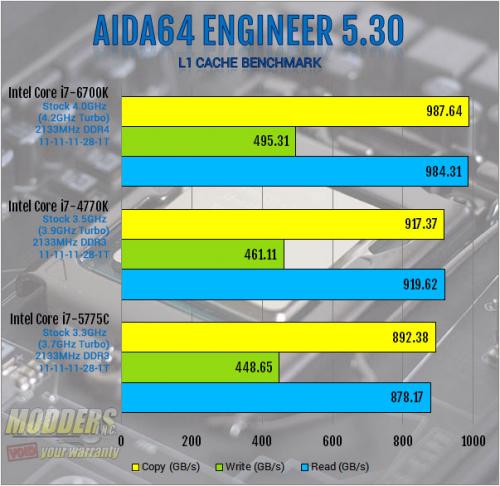
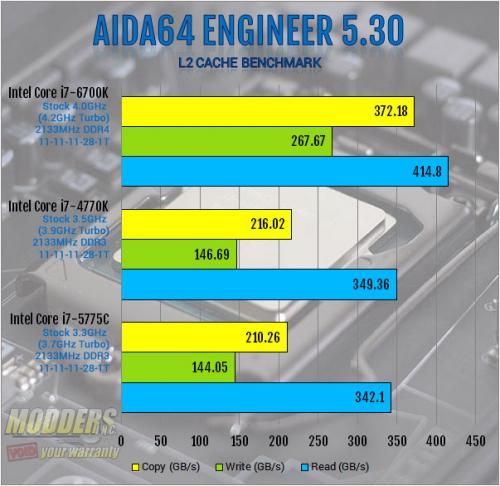
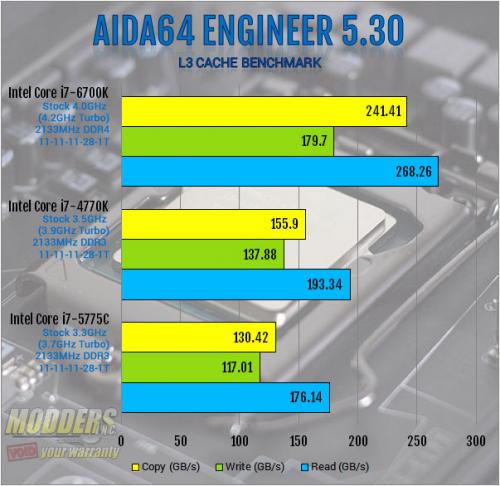
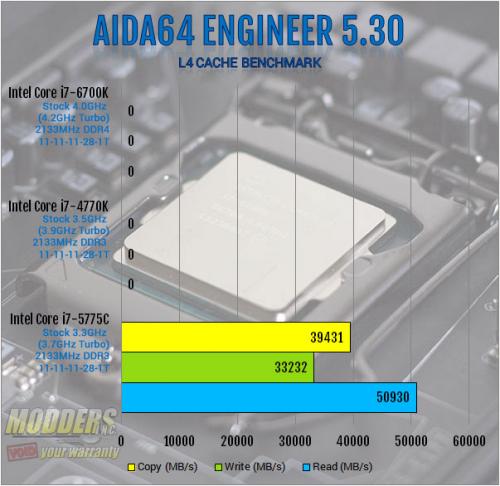
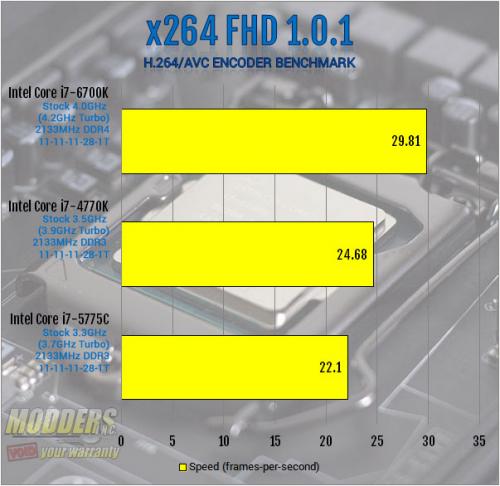
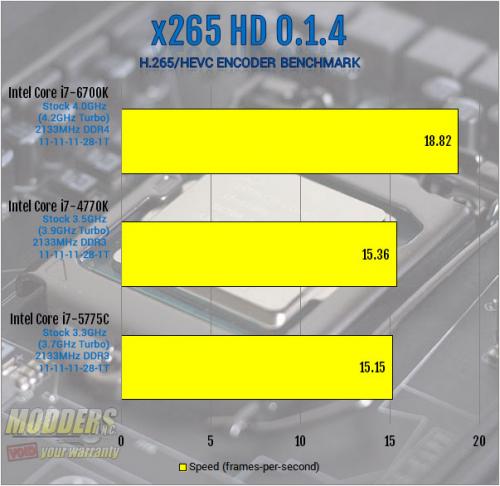
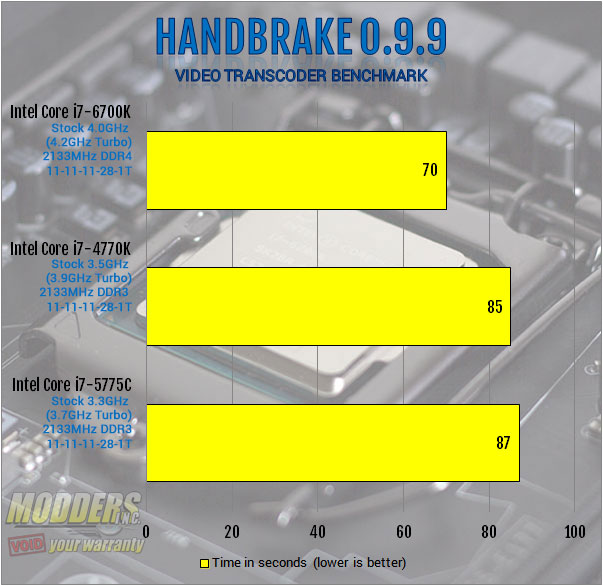
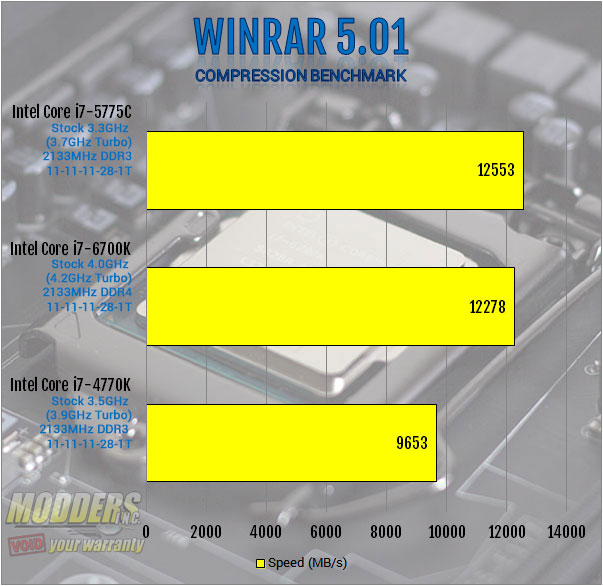
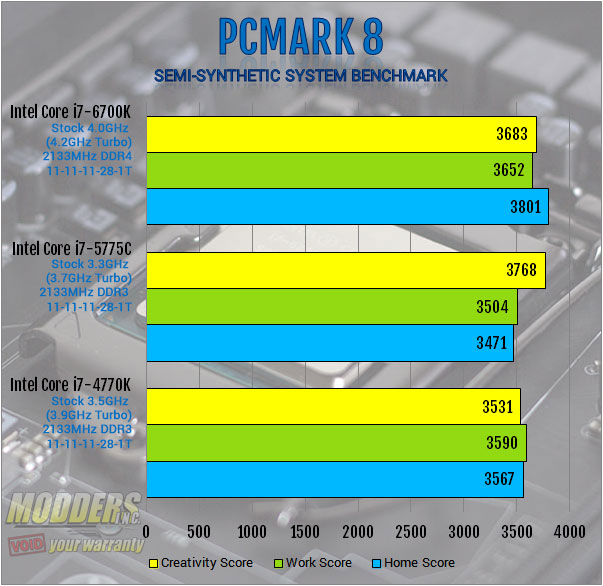



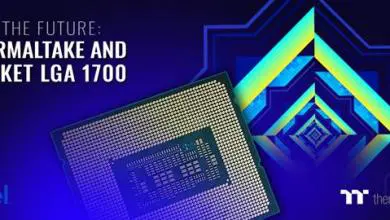
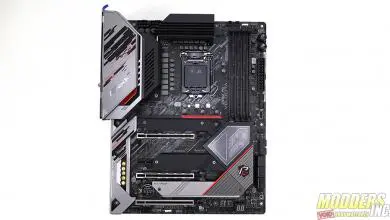
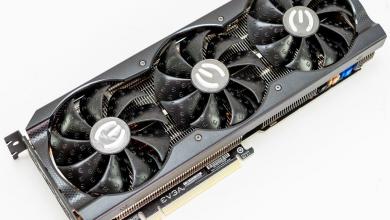

DDR3L refers to a set of specifications, most notably voltage, for DDR3 DIMMs including, but not limited to, SODIMMs. It’s not just for laptops, and it’s not just the small sticks.
Thank you very much. Information verified and article has now been updated.